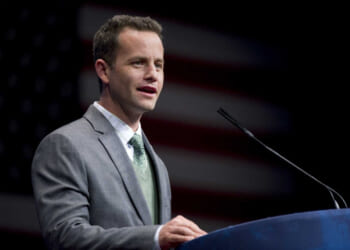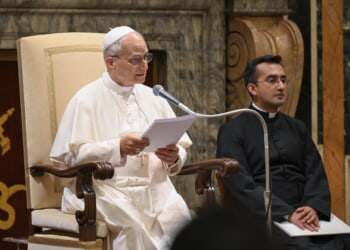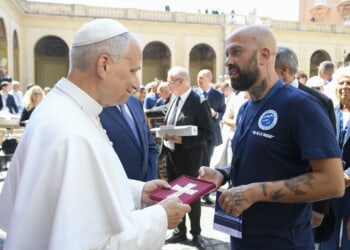Dr Stephen Goss is an historian, policy and research manager, and a Conservative councillor in Reading.
This week, the long-awaited Spending Review will be announced. For months government departments, quangos, and interest groups have been petitioning HM Treasury; arguing, pleading, why they or their area of concern should receive more money – or at least be exempt from the sweeping cuts expected.
In Belfast, Dublin, County Monaghan, and further afield a diverse variety of people and organisations await word of one project in particular: the re-development of the Gaelic Athletic Association’s (GAA) Casement Park in west Belfast.
Described as ‘a stadium for generations to come’ it is looking like it will take several generations to come.
Opened in 1953, Casement Park is named after Sir Roger Casement, a Dublin-born British diplomat turned Irish republican. Casement is renowned for exposing human rights abuses in the Congo and Peru; he was later arrested for his role in the Easter Rising, tried for treason, and hanged. The home ground for the County Antrim Gaelic football and hurling teams, it has been closed since 2013 pending extensive re-development.
Casement Park has lain derelict for twelve years – and the GAA’s original vision of a modern, state-of-the-art stadium on the site has steadily become something of a political and financial controversy.
The initial re-development estimate of £76 million has ballooned, with current forecasts suggesting a final bill of £250m to over £300m. Casement has thus found itself transformed from a crumbling GAA ground into a lightning rod of political, financial, and cultural tensions.
Twenty years ago, there was a determination to construct a single, multi-sport national stadium for Northern Ireland. The epitome of a shared space, it was considered a bold step forward and a symbol of progress that Association, Gaelic, and Rugby football would all be played in the same purpose-built stadium.
However, the politicians could not agree on where such a stadium should be built. The impasse was rooted not in logistics but in the usual sectarian and geographic divides. East Belfast, the Maze, and North Down were all floated as possible locations. None could achieve consensus.
As a result, the vision died and it was decided in 2011 that instead of one shared venue, each sporting body – the Irish Football Association (IFA), GAA, and Ulster Rugby – would receive separate, ring-fenced funding to redevelop its own stadium. (This was never the sports bodies’ preferred outcome. It was a political fix to a political failure.) The IFA would redevelop Windsor Park; Ulster Rugby would upgrade Ravenhill; and the GAA would rebuild Casement Park.
Ulster Rugby and the IFA moved swiftly. Both projects were completed years ago and within reasonable budgets, yet Casement stalled; planning objections, legal challenges, and political uncertainty saw the project repeatedly pushed to the back burner.
As a result, the GAA is now seeking a sum vastly larger than that Ulster Rugby and the IFA received. What was conceived as a three-way, evenly balanced settlement has become an open-ended financial demand, with Casement absorbing more attention, more controversy, and potentially hundreds of millions more in public money.
Among the supposed beneficiaries, support is thin. Residents of west Belfast have vocally opposed and mounted legal challenges to the Casement re-development. Far from welcoming the stadium, they fear the long-term disruption it will bring: years of construction, houses over-shadowed by a new 34,500-seat stadium, a sharp increase in traffic and noise, and serious public order concerns on match days.
Having spent most of my life in Andersonstown, where Casement sits, I know first-hand the traffic chaos, illegal parking, and drunken behaviour that accompanies a big match. Residents’ fears have been downplayed or dismissed by the project’s advocates, but they remain very real.
Also vocal is the opposition in Clones, County Monaghan, where St Tiernach’s Park has been the home of Ulster GAA for 120 years.
Locals in Clones are deeply concerned that if the major provincial matches are transferred to Casement, their town’s fragile economy will collapse. Pubs, restaurants, shops, hotels, and countless others in Clones have come to depend on the influx of supporters. To them, the proposed shift to Belfast feels more like economic abandonment.
In spite of this, the Northern Ireland Executive is providing £62.5m, the Irish Government has offered £42m, and the GAA has pledged £15n for the re-development. Yet, this still leaves – as a conservative estimate – a £140m shortfall. Michell O’Neill, the Sinn Féin First Minister, has said:
“Casement Park must be built, that remains my position. It’s an Executive flagship commitment, it still stands as an Executive flagship commitment so the British government must find a way to honour its political commitment, put their money on the table.”
Alliance and the SDLP concur. However, DUP Minister for Communities Gordon Lyons stated that while the promised money is guaranteed, budget restraints mean he cannot allocate additional funding. Unionists object to pouring money into it when health and frontline services are struggling (when aren’t they?).
Herein lies the crux of the dispute. The GAA is committed to, and was promised, a modern state-of-the-art facility. The decision was taken to move the principal Ulster stadium from Clones to Casement in order to secure the funding for it.
But do the interests of equity require an effective blank cheque for Casement? Or is it unfair that the GAA might get hundreds of millions when the IFA and Ulster Rugby only received tens of millions?
The First Minister has asserted it is a Northern Ireland Executive commitment – therefore, HM Government is expected to step in and foot the bill to solve the problem. But Hillary Benn, the Secretary of State for Northern Ireland, has said that it is important that Casement is built, he has made clear that funding it is now a matter for the Executive, and what is announced in the Spending Review will be a contribution – not a figure to fill the black hole.
If this were merely a domestic quandary, it would be bad enough. But this débâcle has international implications.
When the British Isles submitted their joint bid to host UEFA Euro 2028, Casement Park was included as Northern Ireland’s venue. Windsor Park, though home to Northern Irish football, was ruled out because its 18,000 capacity does not meet UEFA’s 30,000-seat minimum requirement.
Thus, the Northern Irish portion of the Euro 2028 bid hinged on a stadium that doesn’t exist. Last September the Government admitted that the money would not be provided to make Casement ready for the competition. As a result, Northern Ireland will not host any matches, and will therefore lose out on the many benefits Great Britain and the Republic will enjoy from hosting the second most popular football competition after the World Cup.
In 2019, tourism contributed £2.3bn to the Northern Irish economy; the pandemic resulted in the loss of £1bn of tourist expenditure. The Euros would have been a welcome and needed boost to Northern Ireland’s previously flourishing tourism industry.
The dream of a revitalised Casement Park and all the advantages it could bring has become a nightmare of mismanagement, unfairness, and missed opportunity. What is called a ‘flagship commitment’ for Northern Ireland has instead become an emblem of its very dysfunction – a long-running saga that is no longer just a question of a new stadium, but of political credibility, public trust, and fiscal sense.



![Former Bravo Star Charged After Violent Assault Using a Rock-Filled Sock in Tennessee Walmart [WATCH]](https://www.right2024.com/wp-content/uploads/2025/07/Former-Bravo-Star-Charged-After-Violent-Assault-Using-a-Rock-Filled-350x250.jpg)



![Illegal Alien Walked Free After Decapitating Woman, Abusing Corpse for Weeks [WATCH]](https://www.right2024.com/wp-content/uploads/2025/07/1753013138_Illegal-Alien-Walked-Free-After-Decapitating-Woman-Abusing-Corpse-for-350x250.jpg)
![NYC Man Snatches Child Off The Sidewalk, Parents Chase Him Down [WATCH]](https://www.right2024.com/wp-content/uploads/2025/07/NYC-Man-Snatches-Child-Off-The-Sidewalk-Parents-Chase-Him-350x250.jpg)
![Man Arrested After Screaming at Senators During Big Beautiful Bill Debate [WATCH]](https://www.right2024.com/wp-content/uploads/2025/06/Man-Arrested-After-Screaming-at-Senators-During-Big-Beautiful-Bill-350x250.jpg)
![Karoline Leavitt Levels CNN's Kaitlan Collins and Other Legacy Media Reporters [WATCH]](https://www.right2024.com/wp-content/uploads/2025/07/Karoline-Leavitt-Levels-CNNs-Kaitlan-Collins-and-Other-Legacy-Media-350x250.jpg)






